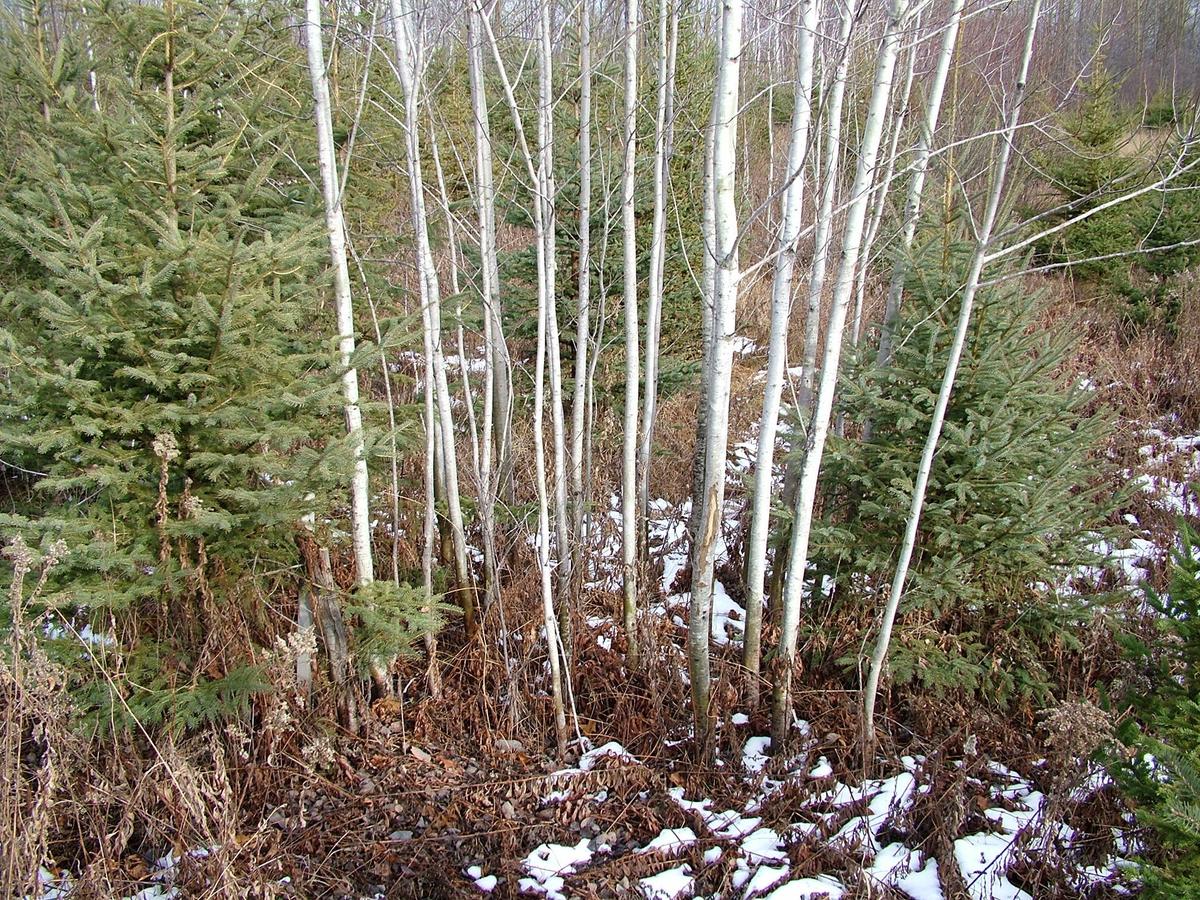Pre-treatment stand description and condition
Stand establishment and management history:
Stand started as an abandoned hay field that came to Itasca County as tax forfeited land.
June 1996. Stand treated with Velpar at 4 quarts / acre.
September 1996. Stand double disced.
May 1997. Site planted to improved white spruce at roughly 8’ x 8’ spacing (~2.5 x 2.5 m) and then plug + 1 seedlings of hybrid aspen were interspersed amongst the spruce. Large and small hybrid aspen seedlings were planted in “dense packs’ of 16-100 seedlings at ~1’ x 1’ spacing (0.3 x 0.3m) by trenching with a #2 shovel. Hybrid aspen dense packs were established with minimal removal of white spruce (Figure 2). No additional site preparation or vegetation management was used. Four replications of large stock hybrid aspen (Populus tremuloides X P. tremula) measuring 0.25 – 0.4 in. (7-10 mm) at root collar, top pruned to 12 in. (30 cm) and root pruned prior to winter storage, were planted in dense packs of 16, 25, 49 and 81 seedlings. Four replications of small stock hybrid aspen measuring < 0.25 in. (7 mm) at root collar and similarly top and root pruned were planted in dense packs of 25, 49 and 100 seedlings (Figure 1).
April 2001. Rep 1 of small stock and Rep 2 of large stock are sheared with a chainsaw after 4 growing seasons.
June 2001. Fusilade herbicide applied to half of the sheared plots at rate of 0.4 quart / acre (~1.0 L / ha).
Summer 2002. Large outbreak of forest tent caterpillar (Malacosoma disstria) defoliates the seedlings and suckers.
April 2006. All spruce within 20 ft (6 m) of all plot centers are cut with a chainsaw and removed.
December 2006. All 10 year old dense packs and 6 year old suckers (from Rep 1 of small stock and Rep 2 of large stock) are sheared with a chainsaw.
Landowner objectives/situation:
As tax-forfeited land the landowner is charged with managing the land in lieu of taxes, which in northern Minnesota typically means forest management. This site is close to a thermo-mechanical pulp mill in Grand Rapids, MN which uses light colored wood fiber (primarily spruce and aspen) to produce high quality coated paper. Due to the proximity of the mill forest productivity is a high priority.
Silviculture Prescription
Target regeneration stocking and residual stand conditions: A minimum initial sucker density of 4000-5000 / acre (10000-12000 / ha) is required to be an effective aspen stand through commercial maturity.
Harvest area size(s) and arrangement: Approximately 2 acres where hybrid aspen dense packs are interspersed with improved white spruce.
Species to reserve or harvest: Hybrid aspen seedlings need to be sheared to create a sucker stand that expands beyond the dense pack locations. Once the hybrid aspen sucker stand is established it will have to be harvested within 40 years to be able to regenerate. White spruce on site can survive much longer.
Harvest season: Hybrid aspen to be sheared during dormant season to maximize sucker formation. White spruce within 20 ft (6 m) of dense pack centers also to be removed prior to hybrid aspen shearing to allow sunlight to warm soils and promote suckering.
Regeneration plan: Commercial harvest of hybrid aspen should increase stem density and area covered via root suckers. Many factors determine commercial viability of aspen stands in the area including stand volume, wood quality, potential for summer harvest, proximity to markets, and stumpage costs. In general, the aspen would be considered commercially viable at 4-5 100 in. (250 cm) sticks to a 3 in. (7.5 cm) top. The hybrid aspen are expected to be commercially viable approximately 20-25 years post shearing.
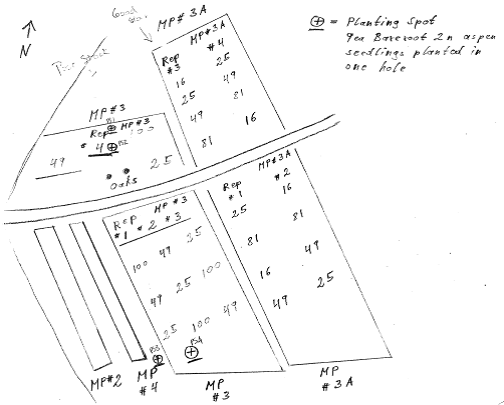
Figure 1.Site map and experimental design. Of interest to the Silviculture Library are locations labelled MP#3 and MP#3A. Note “good stock” and “poor stock” at the top of the site map are discussed below as “large” and “small” stock respectively.
What actually happened during the treatment
Hand planting of hybrid aspen in dense packs of various sizes and improved white spruce on traditional 8 ft x 8 ft spacing (~2.5 m x 2.5 m). Larger hybrid aspen seedlings survived slightly better than smaller seedlings otherwise neither stock size or dense pack size had a significant difference on average seedling height or dbh at age 10. At age 10 all hybrid aspen trees were sheared with a chainsaw (although a weed whip with a fixed cutting head would have been a better choice) and all white spruce within 20 ft (~6 m) of dense packs were removed (Figure 2). Hybrid aspen suckers were allowed to fill in naturally (Figure 3).
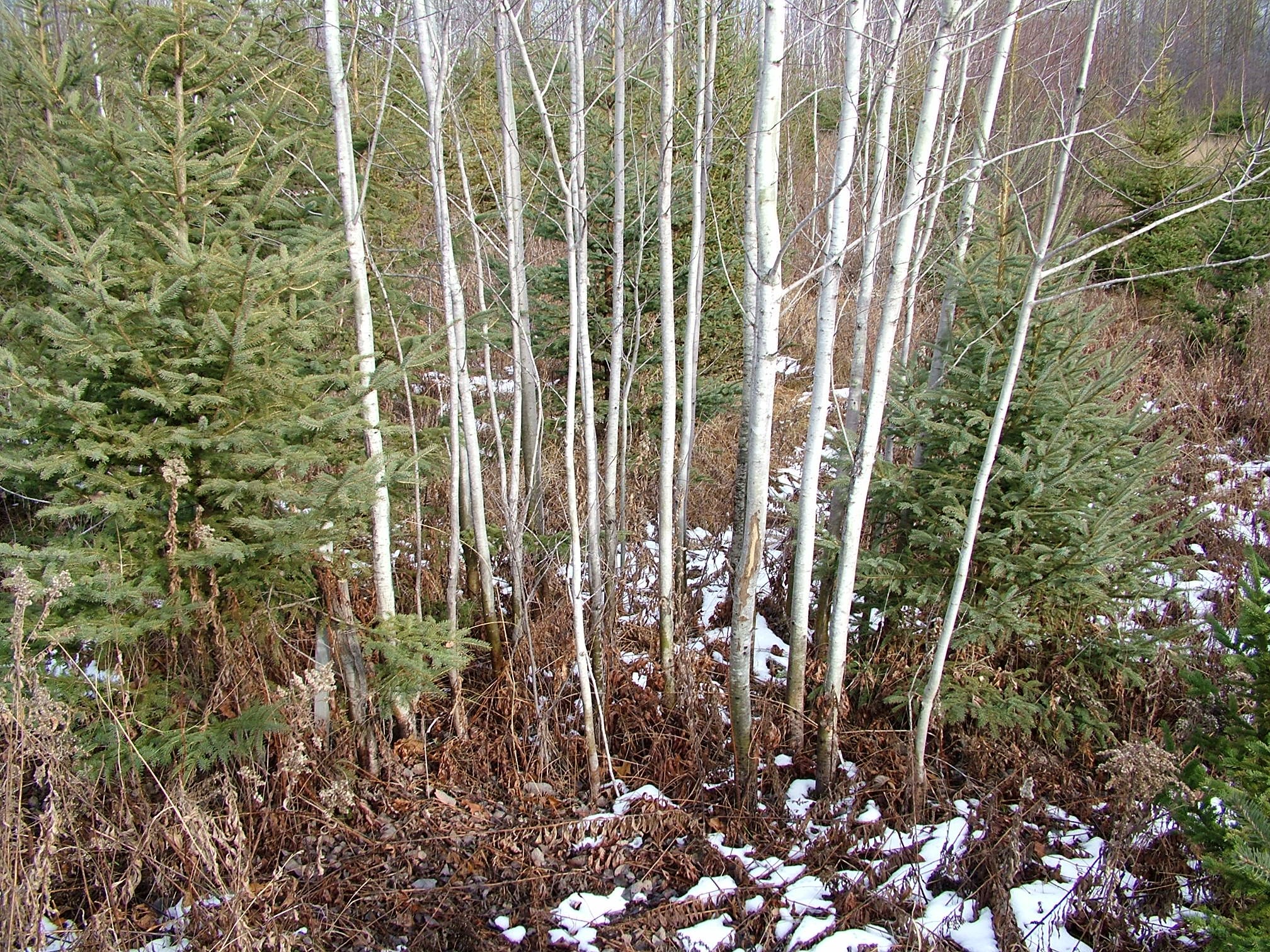
Figure 2. An 81 seedling hybrid aspen dense pack after 9 growing seasons. Exterior seedlings which were likely browsed by deer when young have protected the interior seedlings.
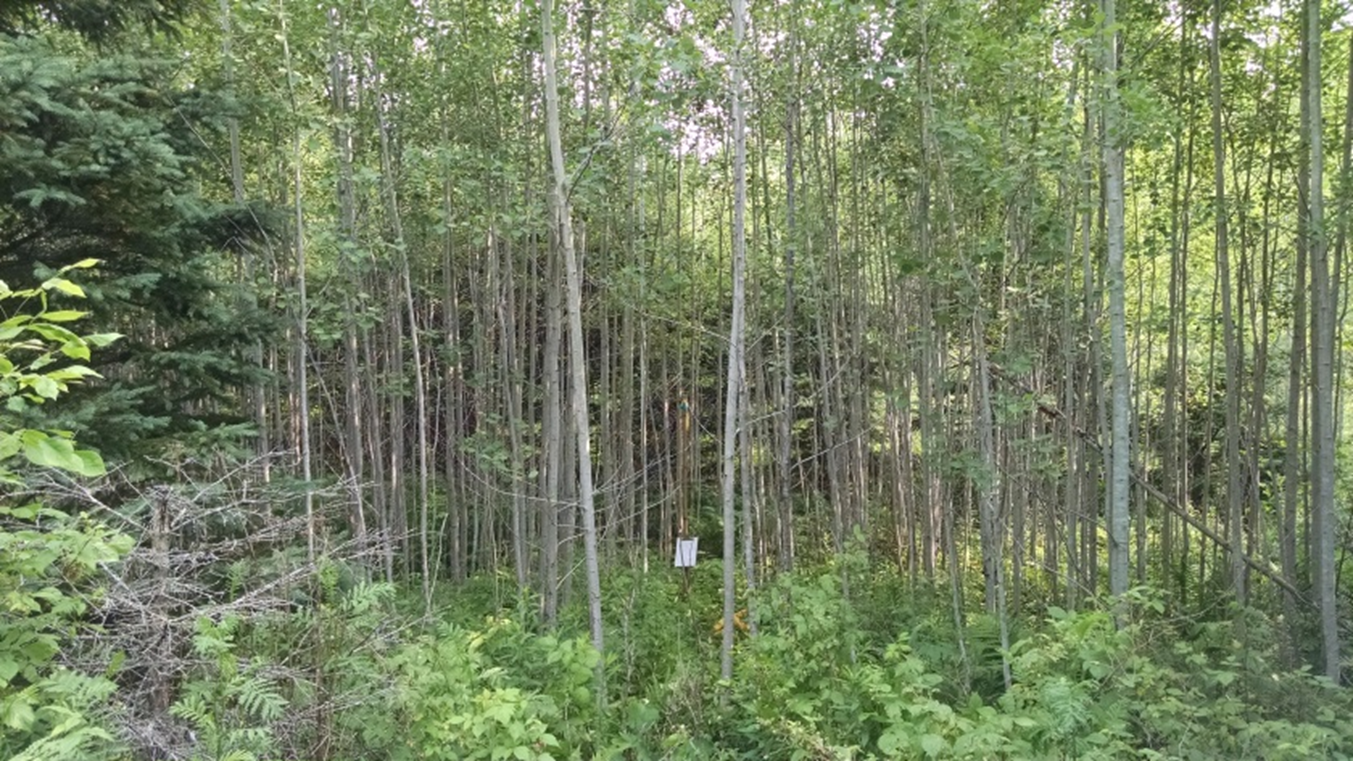
Figure 3. A 49 seedling dense pack 8 growing seasons after shearing. Note the 2 meter stick behind the clipboard in the foreground. These suckers are growing in excess of 1 m / yr (3.3 ft / yr).
Post-treatment assessment
Across all stock types and dense pack sizes the annual mortality rate for 10 year old seedlings was ~ 7.0%. This included an outbreak of forest tent caterpillar (Figure 4).
10 year old dense packs with an average height of 13–16 ft (4-5 m) produced over 4000 suckers / acre (10000 suckers / ha) 3 years post shearing within 20 ft (6 m) of dense pack center (Figure 5).
10 year old dense packs with an average dbh of 1-1.5 in (3-4 cm) produced over 4000 suckers / acre (10000 suckers / ha) 3 years post shearing within 20 ft (6 m) of dense pack center (Figure 6).
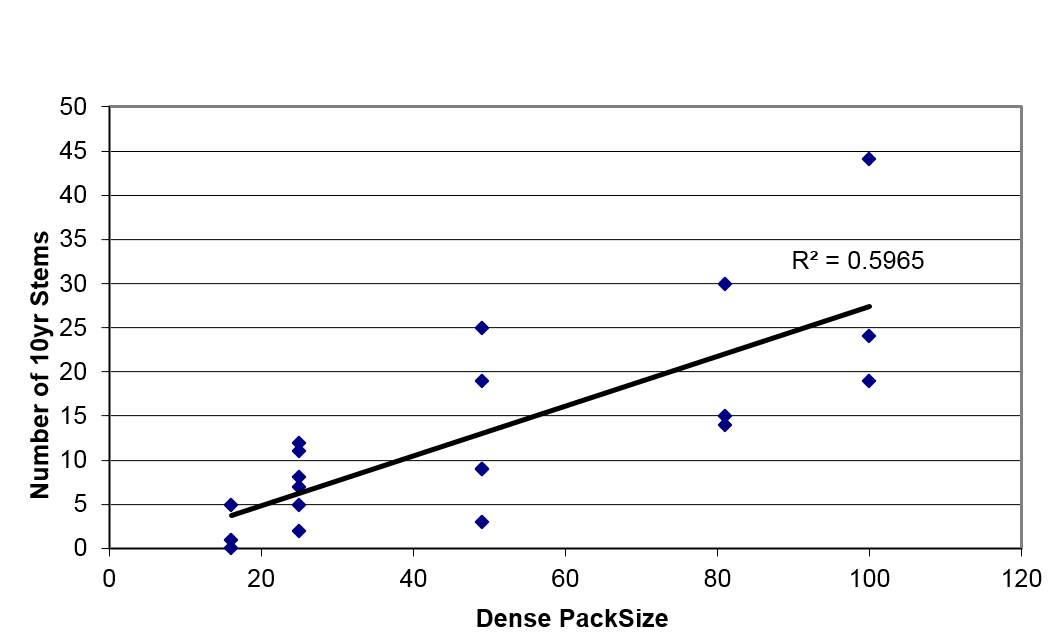
Figure 4. Effect of initial dense pack size on number of surviving hybrid aspen stems at 10 years of age.
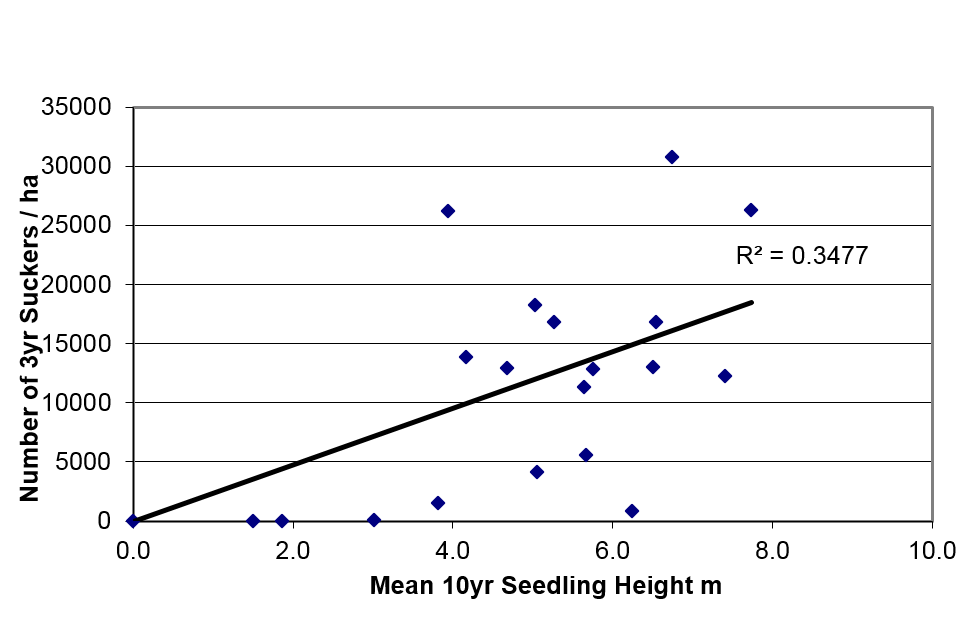
Figure 5. Number of three year old suckers / ha compared to the average dense pack seedling height at 10 years old.
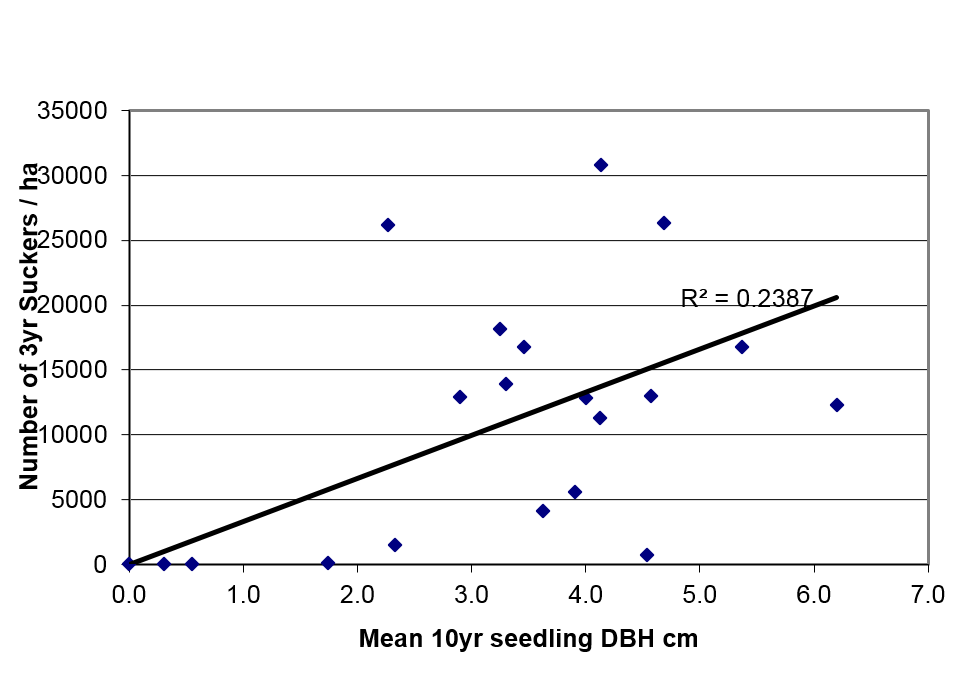
Figure 6. Number of three year old suckers / ha compared to the average dense pack seedling dbh at 10 years old.
Plans for future treatments
No further treatments are planned prior to commercial harvest. We will continue to monitor growth of suckers from dense pack plot centers at 5 year intervals. Next measurement is 10 years from shearing (fall 2016). Because this is a mixed species planting (white spruce and hybrid aspen) there are opportunities for mixed species management. For example, harvest both species simultaneously then manage aspen sucker numbers by hand shearing and underplant white spruce, or harvest each species independently, using the shade of spruce to control the amount and location of aspen regeneration. Depending on hybrid aspen growth, opportunities for commercial harvest should begin at 20-25 years from shearing (2026 or 2031) and repeat every 20-30 years. The white spruce on site is improved stock which should allow for spruce harvest within the lifespan of hybrid aspen which is ~40-45 years from shearing (2036-2041).
Costs and economic considerations
Total cost of hybrid aspen establishment will vary by location, size of planting, nursery costs, planting costs and initial number of seedlings per acre which is a function of dense pack size and number of dense packs deployed per acre. In general, the cost of these individual activities are well known to forest management but variable among regions. Typical activities for establishing hybrid aspen would include: herbicide spot spray dense pack sites, 1-0 container grown or plug+1 hardwood seedlings, hand planting, hand shearing.
Summary / lessons learned / additional thoughts
Preliminary analysis suggests that dense packs of 36 or 49 seedlings are the minimum size to promote seedling growth without controlling vegetation. At this dense pack size deer browse is inconsequential as the outer seedlings get browsed and are held back but the inner seedlings survive. Additional analysis indicates that 10-15 seedlings that have reached 4-5 m in height (~13-16.5 ft) and 3-4 cm in dbh (1.2-1.5 in) can be sheared and will produce sufficient sucker numbers (5000/ac or 12000/ha) to regenerate the area as hybrid aspen (Figure 7). A light fertilizer application 2-3 years after dense pack establishment may cut the time to shearing size substantially. Delaying shearing to increase height and dbh may increase spread of suckers decreasing the need for dense packs per acre.
Across 10 years of seedling growth the average annual mortality was roughly similar for large and small stock at ~ 7.0% / year. This average was inflated by an outbreak of forest tent caterpillar which saw a one year increase of 5-7x the annual level.
Smaller initial seedlings (< 0.25 in root collar diameter or 7 mm diameter) may require a larger size dense pack (49 or 64 seedlings) to generate the 10-15 stems needed at shearing to result in sufficient sucker numbers to regenerate the stand.
Dense packs of 49 seedlings appear to produce enough stems to shear and enough suckers once sheared to cover a 1600 ft2 area (150 m2) suggesting that dense packs could be spaced 40 ft (12 m) apart and suckers would fill in the intervening area after shearing.
The application of Fusilade herbicide or control burning after shearing did not have a statistically significant impact on either sucker number or height.
Defoliation of 6 year old seedlings by forest tent caterpillar decreased the rate of height growth of small seedling stock more than large seedling stock.
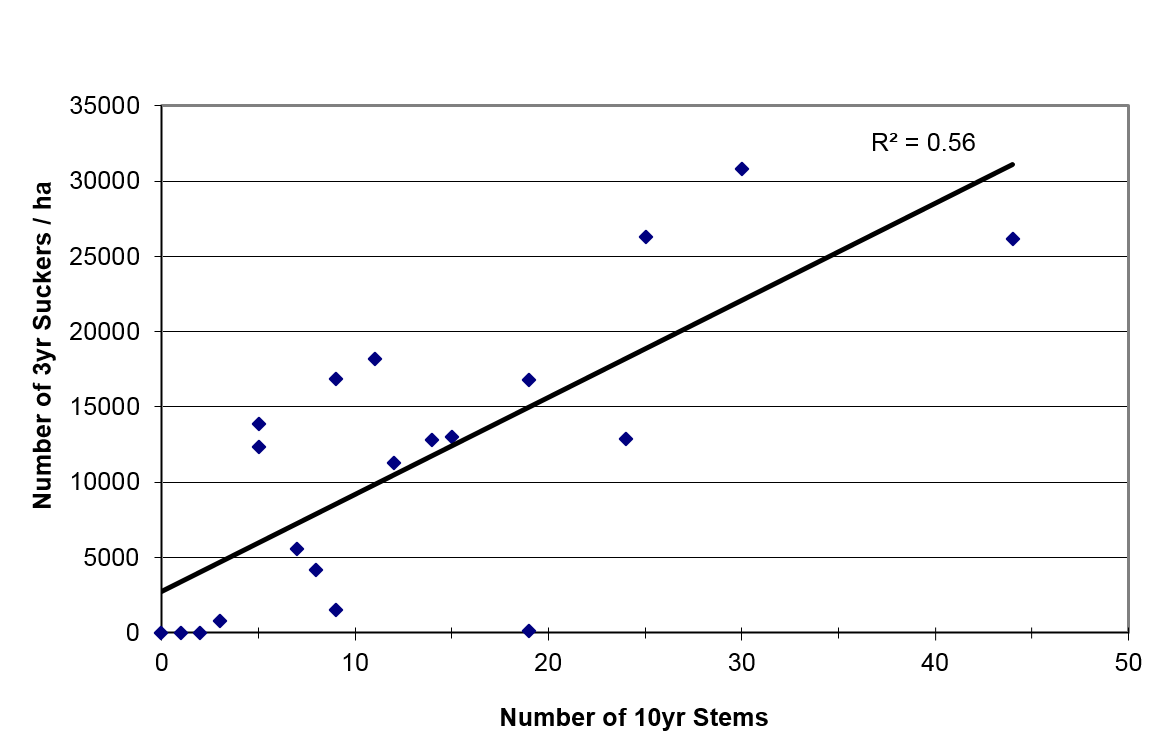
Figure 7. Number of 3 year old suckers / ha as a function of the number of live 10 year old stems in a dense pack.
